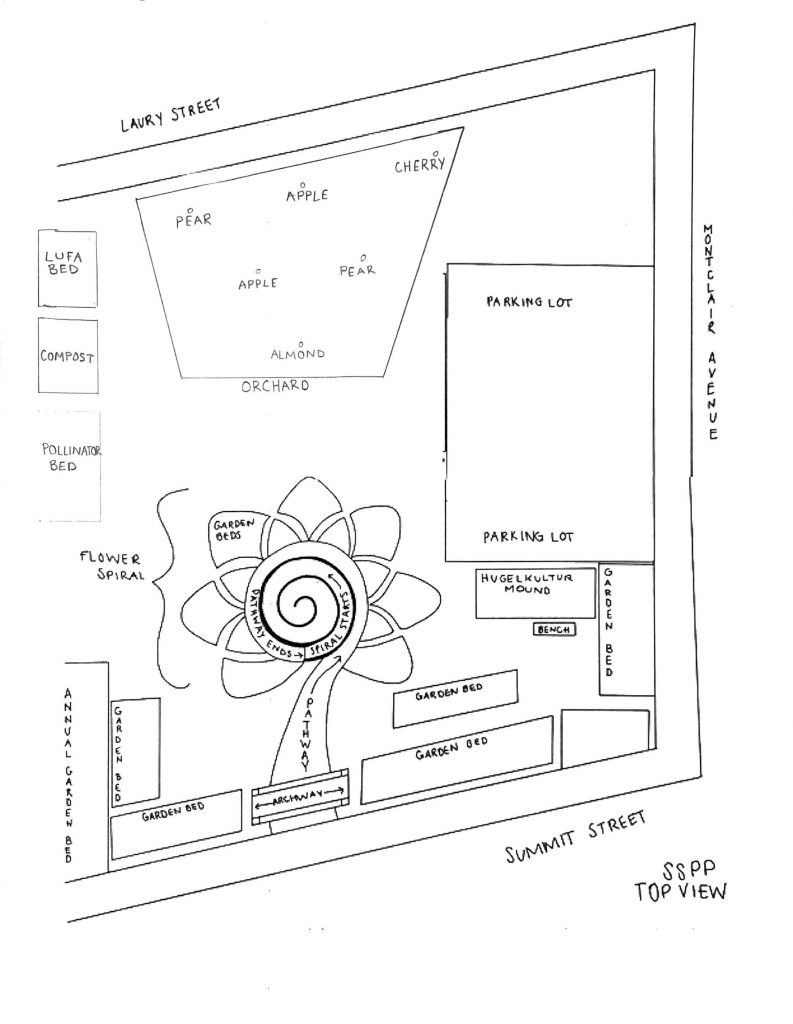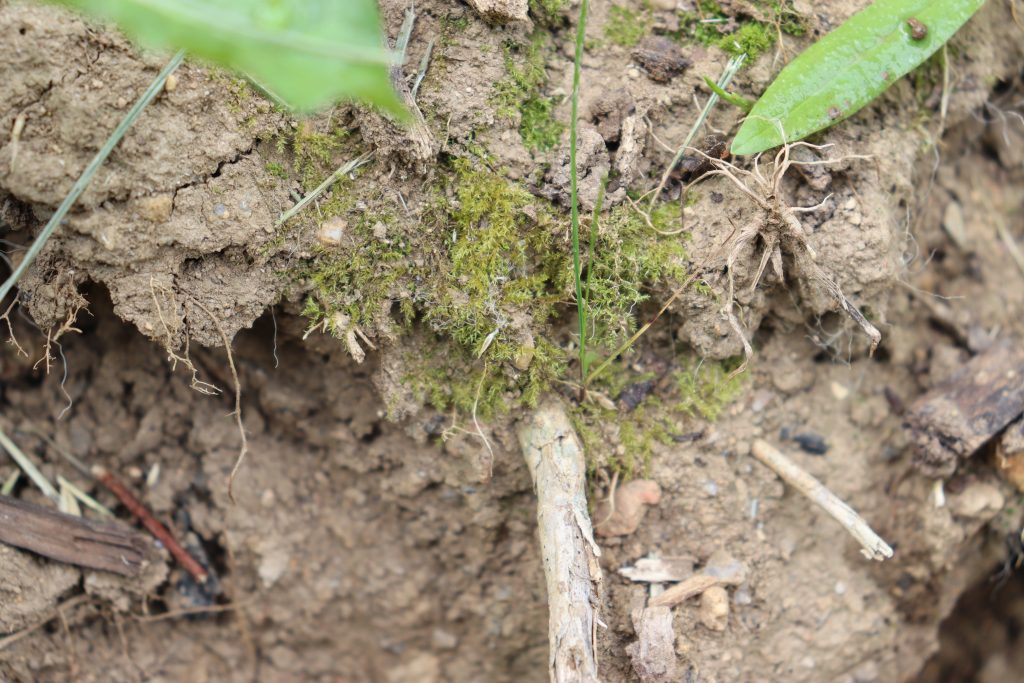The grass around our petal beds at the Southside Permaculture Park has been a nuisance since the lawn mower cannot get in between the beds. One solution is to put stone or wood chips in between to combat this, but that would decrease biodiversity and get rid of ground cover plants that are beneficial to the structure of the soil. Instead, we have started an experiment on growing moss within these areas.
What Is Moss?
Moss, a part of the Bryophyta division1, has many benefits and reduces the need for lawnmowers and weed-whackers, saving time, money, and cuts carbon emissions. Being one of the first plants on Earth, moss can grow practically anywhere besides really dry, arid regions. It can help retain moisture because when it rains, the root-like rhizoids soak up all the water and then slowly releases it to their surroundings. Moss also helps with erosion because of its sponge-like qualities, reducing runoff of rainwater.
Once the moss is established in an area, you will not have to use any pesticides or fertilizers and it will keep the grass and weeds at bay. Beneficial insects like to live in moss while the typical garden pests do not and will not harm or eat moss. It also is disease resistant, therefore fungicide or anything of that nature should not be necessary. Research has also found that moss may help filtrate toxic elements like silver, copper, and mercury as well as oils and dyes. This is especially good in urban areas such as South Bethlehem with lots of stormwater runoff that collects toxic materials by absorbing the materials creating a healthier soil environment. Moss has even been known to be the first plant growing at mining sites because it withstands metal and other toxins. Another benefit of moss is they are wonderful at carbon sequestration. Sphagnum peatlands2 sequester more carbon than all rainforests combined. All of these benefits makes moss a strong addition to our park’s ecosystem and is great for a yard if you would like less maintenance.
Park Map

Starting A Moss Lawn
To start a moss lawn I first had to gather some preexisting moss. I went into the forest and found some mossy bark and rocks and took some from sporadic locations so that I wouldn’t be disrupting a moss population in one area too much. I tried to pick mosses that were growing in already partially sunny to sunny places because the spaces around the petal beds are under similar conditions. Once I had enough moss, I shredded it and threw it in a blender with plain yogurt. This moss slurry then needed to sit for a couple of days so that the moss could generate spores.
Why Yogurt?

The yogurt serves as an adhesive for the moss so that it can stick to surfaces. After letting the slurry sit, I went to the park and scoped out the best location to start a moss lawn. I found some moss already growing on the north side of the herb spiral near a petal bed and decided this would be the best.
At The Park

I ripped up the grass and other weeds in a small patch and spread the slurry as evenly as I could. Now we just have to wait about 3 to 6 months to see if any moss pops up. I lightly misted the area with water occasionally since moss requires little water. Hopefully this all works out and I can expand the moss around all of the petal beds, keeping weeds out of the beds and surrounding areas. If I get a lot of moss growing in that area, I may decide to transplant it directly to other beds instead of doing more moss slurry.
Footnote
- Bryophyta division: bryophytes; informal name for mosses, hornworts, and liverworts.
- Sphagnum peatlands: moss covered wetlands with water-logged soil consisting of decaying/dead plant matter
Resources
https://www.gardeningknowhow.com/lawn-care/lawn-substitutes/moss-lawn/how-to-grow-a-moss-lawn.htm
So…….what about the experiment Don’t leave us hanging like a bunch of Spanish moss.
Thanks for the report
Hello Chuck,
Thank you for the response! The 2022 team which had published this experiment has departed the project. The current team will be taking a look into this, but as for now there has been no advancements made with the moss at our park site. We are, however, planning to build a pathway. A concern about moss is the slipperiness, it could become a safety hazard for people who want to utilize the park space.
Thank you for your interest in this project! We will be revamping the website over the next few weeks to provide more updated materials and credible sources to learn all things permaculture & other tips & tricks!
Warm regards,
2023 Permaculture Team